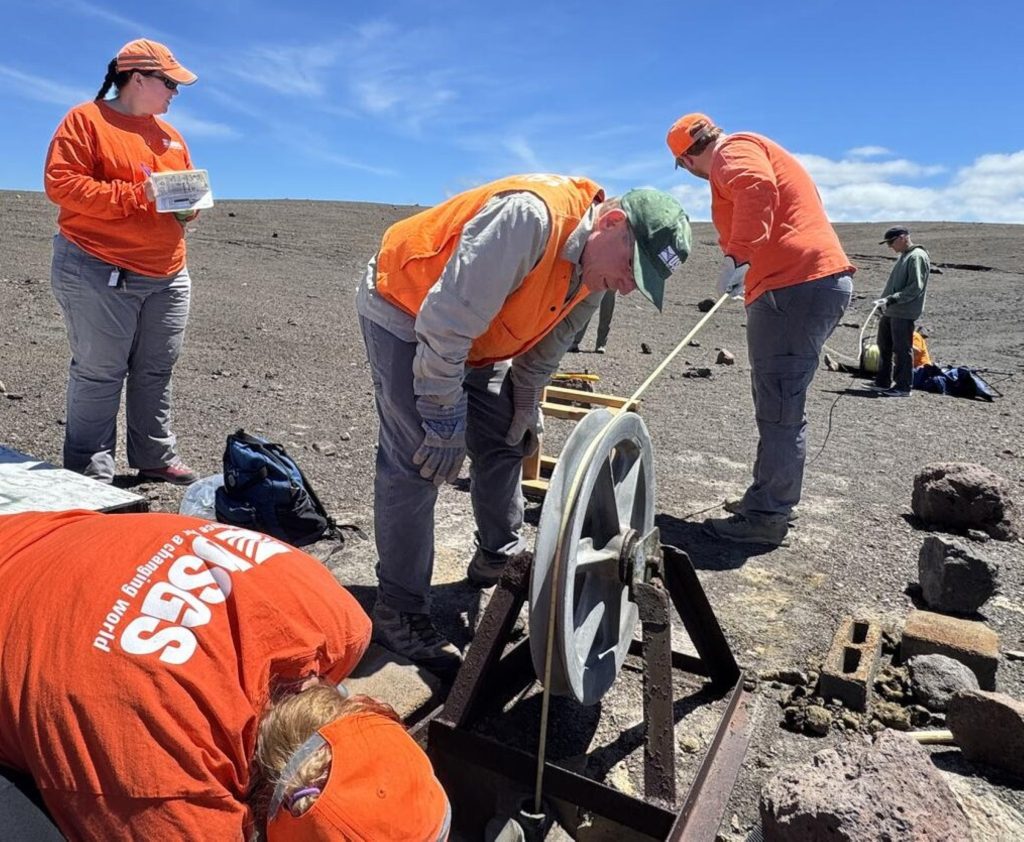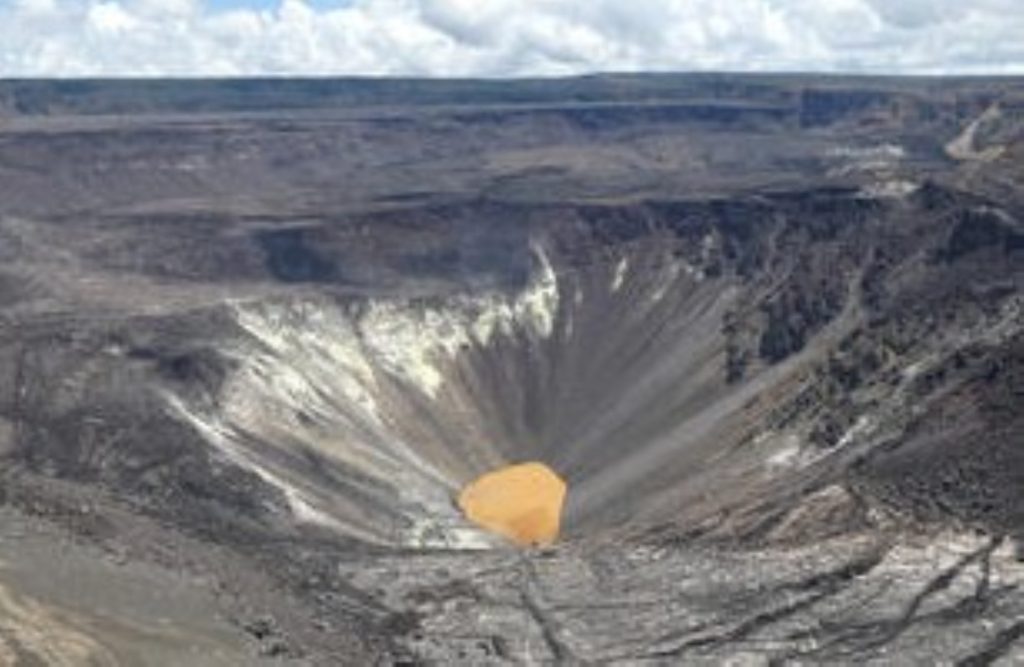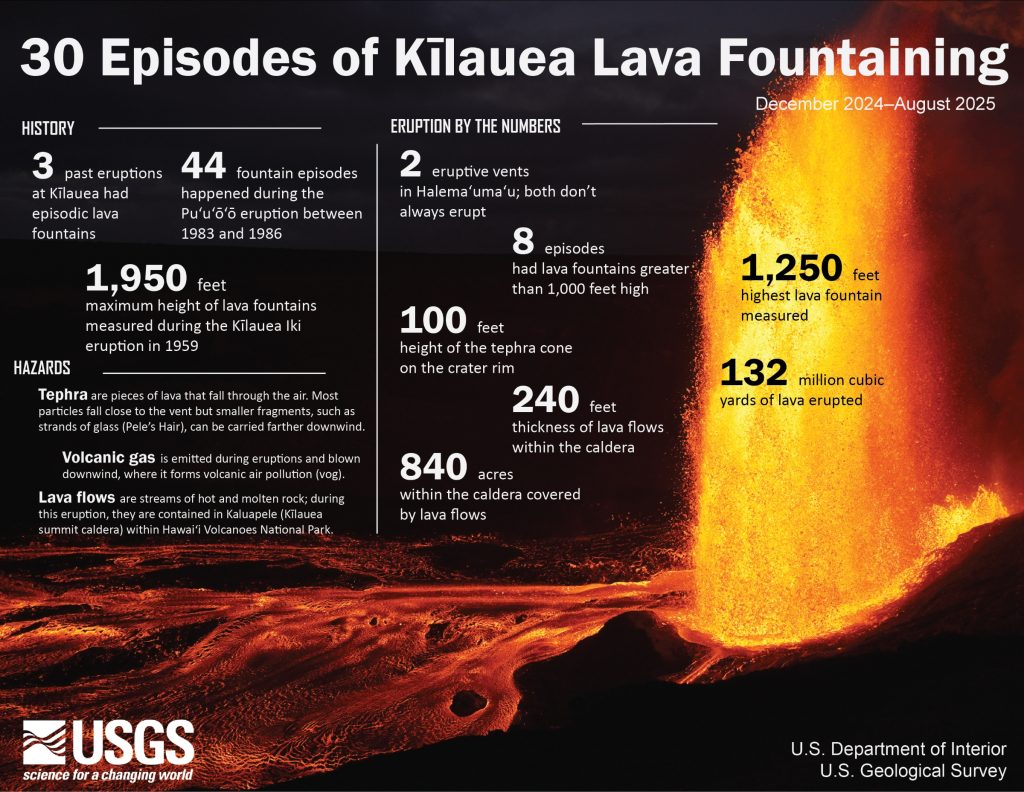Volcano Watch: Water in Kīlauea — and its role in its eruptions
“Volcano Watch” is a weekly article and activity update written by U.S. Geological Survey Hawaiian Volcano Observatory scientists and affiliates. Today’s article is by U.S. Geological Survey California Volcano Observatory research hydrologist Shaul Hurwitz.
When most people think of erupting water, they probably have geysers — such as Old Faithful Geyser in Yellowstone National Park — in mind.
However, Kīlauea and its diverse style of eruptions also are significantly impacted by water.
In fact, some of Kīlauea’s past explosive eruptions occurred when magma erupted through groundwater or lake in a summit crater.
Water — H₂O — that originates from the atmosphere, including snow and rain, is called “meteoric water.”
The large amounts of rain in and around Kīlauea seep into the ground — rather than flow in streams — because the shallow basaltic rocks of Kīlauea have very high permeability, meaning a lot of water can flow through them.

When the water is beneath the ground, it is called groundwater.
Measurements made for more than two decades in a deep well on Kīlauea’s summit provided information about the depth of groundwater — and it is deep!
Until the 2018 eruption, water level in the well varied between about 1,600 and 1,620 feet below the ground surface. Water in the well after the eruption dropped to about 1,660 to 1,670 feet. That is about 240 feet above sea level.
Chemical analysis of water from the well informed scientists how much gas emitted from the magma is absorbed by groundwater. Although the water in the well contains significant amounts of sulfur and chlorine from the magma, the water itself is predominantly meteoric.
Another, albeit short, glimpse into Kīlauea’s groundwater came from sampling a water lake that filled the Big Island volcano’s summit crater between July 2019 and December 2020.
That lake was mostly filled by groundwater flowing from the surrounding rocks. To know what was in the water, Hawaiian Volcano Observatory scientists collected samples using drones — or uncrewed aircraft systems.
Chemical analysis of the water revealed it was very saline — about twice the salinity of seawater — and contained a lot of sulfur. However, the sulfur in the lake was not derived from gas released by underlying magma; it was leaching of minerals containing sulfur, or sulfate minerals.
At that time (2019–20), that inference suggested a small likelihood of an explosive phreatomagmatic eruption — an eruption that occurs when magma interacts with external water.

Although most of the water below ground is meteoric, small amounts of water are also dissolved in deep magma, similar to carbon dioxide — CO₂ — being dissolved in carbonated drinks.
When the magma moves closer to the ground surface and pressure on the magma decreases, water is released — and other gases — from the magma.
The water released from the magma is either emitted to the air as a gas plume — with the other gases, such as sulfur dioxide — or it mixes with meteoric groundwater.
The process is like opening a bottle of soda that causes the CO₂ to be released from the liquid, form bubbles and escape from the bottle.
Most measurements of gas emission in Kīlauea are focused on determining the amount of sulfur dioxide — SO₂ — but the most abundant gas in the plume is actually water — as steam.
Gas plumes in Kīlauea contain on average about 90% water. How do scientists know that?
By measuring the concentrations of gas samples collected from high temperature fumaroles and from remote measurements with an instrument called Fourier Transform infrared spectrometer that can measure the relative abundance of some gases, including those of SO₂, CO₂, hydrogen chloride and water.
Water is a key ingredient in all volcanoes.
H20 has a significant impact on the explosivity of the eruptions, texture of erupted rocks and amounts and compositions of gases emitted at Kīlauea.
The volcano’s continuous evolution is controlled by many factors — water is one of the most significant.
For further reading: “Groundwater Dynamics at Kīlauea Volcano and Vicinity, Hawaiʻi,” in U.S. Geological Survey Professional Paper 1867.
VOLCANO ACTIVITY UPDATES
KĪLAUEA volcano, Hawai‘i Island
U.S. Geological Survey Volcano Alert Level: WATCH
Kīlauea has erupted episodically within its summit caldera since Dec. 23, 2024. Episode 30 of the ongoing eruption in Halemaʻumaʻu Crater — and confined inside Hawai‘i Volcanoes National Park — happened Aug. 6.
Sulfur dioxide emission rates are elevated in the summit region during active eruption episodes. No unusual activity has been noted along Kīlauea’s East Rift Zone or Southwest Rift Zone.
WHAT’S NEXT? Summit region inflation since the end of Episode 30, along with low-level tremor, suggests that another episode could occur within the next week.

MAUNA LOA volcano, Hawai‘i Island
U.S. Geological Survey Volcano Alert Level: NORMAL
Mauna Loa is not erupting.
Seismicity rates recovered from the previous month, with an increase by 34%. Clustering under the upper Southwest Rift Zone dissipated, but there was an increase in dispersed small deeper events.
The volcano remains relatively quiet nonetheless, with 70 small-magnitude earthquakes of less than magnitude-3 detected beneath its summit, which is expected following the 2022 eruption.
Data continue to show only minor inflation beneath the summit as the volcano recovers from its previous eruption 3 years ago, and magma replenishes the reservoir system.
Hawaiian Volcano Observatory continues to closely monitor Kīlauea and Mauna Loa.
EARTHQUAKE report
No earthquakes were reported felt during the past week in the Hawaiian Islands.
Visit Hawaiian Volcano Observatory’s website for past “Volcano Watch” articles, Kīlauea and Mauna Loa updates, volcano photos, maps, recent earthquake information and more. Email questions to askHVO@usgs.gov.



